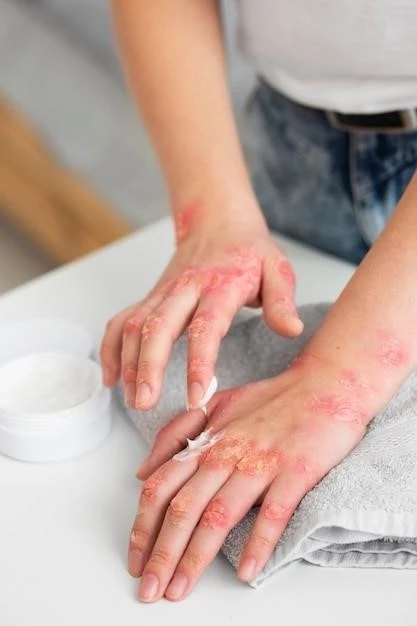Understanding Herpes Zoster (Shingles)
Herpes zoster, commonly known as shingles, is a viral infection caused by the varicella-zoster virus. It typically presents with painful blisters in a specific dermatome.
Key topics to cover include the causes and transmission of the virus, symptoms, diagnosis, risk factors, complications, treatment options, importance of vaccination, reactivation, and special considerations for immunocompromised individuals.

Introduction to Herpes Zoster
Herpes zoster, commonly referred to as shingles, is a viral infection caused by the varicella-zoster virus, the same virus that causes chickenpox. After a person recovers from chickenpox, the virus remains dormant in the nervous system and can reactivate later in life, causing shingles.
Shingles typically presents as a painful rash with fluid-filled blisters that usually develop in a specific dermatome, which is a region of the skin that is innervated by a single spinal nerve. This reactivation of the virus can lead to significant discomfort and complications, especially in older adults and those with weakened immune systems.
Understanding the nature of the varicella-zoster virus and how it manifests as shingles is crucial in recognizing the symptoms early, seeking appropriate medical care, and preventing further transmission to others. In the following sections, we will delve deeper into the causes, symptoms, diagnosis, treatment options, vaccination, reactivation, and special considerations for immunocompromised individuals related to herpes zoster.
Causes and Transmission
Herpes zoster, or shingles, is caused by the reactivation of the varicella-zoster virus, which remains dormant in the nervous system after a person has had chickenpox. The exact triggers for the virus to reactivate are not fully understood, but factors like aging, stress, weakened immune system, and certain medical conditions may play a role.
The transmission of the varicella-zoster virus differs from that of chickenpox. While chickenpox spreads through respiratory droplets or direct contact with the fluid from the blisters of an infected individual, shingles is not directly contagious. However, a person with shingles can transmit the virus to others who have not had chickenpox and are therefore not immune to the virus, causing them to develop chickenpox, not shingles.
It is essential to maintain good personal hygiene, especially when in contact with individuals who are susceptible to chickenpox, to prevent the spread of the virus. Understanding how the varicella-zoster virus reactivates and the transmission dynamics can help in taking appropriate precautions to minimize the risk of infection among vulnerable populations.
Symptoms and Diagnosis
The hallmark symptom of herpes zoster, commonly known as shingles, is a painful rash that typically develops on one side of the body or face. The rash is often accompanied by fluid-filled blisters that can break open and crust over. These blisters usually follow the pattern of a specific dermatome, reflecting the nerve pathway where the virus has reactivated.
Before the rash appears, individuals may experience burning, tingling, or numbness in the affected area. The pain associated with shingles can be intense and debilitating, often described as a sharp or shooting sensation.
Diagnosing shingles is usually based on the distinctive rash and symptoms. A healthcare provider may also perform a physical examination and, in some cases, a viral culture or polymerase chain reaction (PCR) test to confirm the presence of the varicella-zoster virus.
If you suspect you may have shingles, seek medical attention promptly. Early diagnosis and treatment can help manage symptoms, reduce the risk of complications, and prevent the spread of the virus to others who may be vulnerable to chickenpox.
Understanding Dermatomes
Dermatomes are specific areas of the skin that are innervated by sensory nerves from a single spinal nerve root. In the case of herpes zoster, dermatomes play a crucial role in understanding the distribution of the painful rash and blisters that characterize shingles.
Each dermatome is associated with a particular spinal nerve, and the varicella-zoster virus reactivates in a specific dermatomal pattern. By knowing the dermatomal distribution, healthcare providers can often pinpoint the underlying spinal nerve affected by the virus.
Understanding dermatomes can aid in diagnosing and treating herpes zoster effectively. The identification of the dermatome involved in a shingles outbreak can guide the healthcare provider in recommending appropriate pain management strategies and monitoring for potential complications associated with nerve damage.
If you have been diagnosed with shingles, understanding the concept of dermatomes can help you comprehend why the rash and pain are localized to a specific area of your body. It can also assist you in communicating effectively with your healthcare team about your symptoms and treatment options.
Risk Factors and Complications
Several factors can increase the risk of developing herpes zoster, or shingles. Advanced age, particularly individuals over 50, and having had chickenpox in the past are significant risk factors. Additionally, a weakened immune system due to conditions like HIV/AIDS, undergoing chemotherapy, or taking immunosuppressive medications can make individuals more susceptible to shingles.
Complications of herpes zoster can vary in severity and may include long-lasting nerve pain, known as postherpetic neuralgia, which can persist after the rash has healed. Other potential complications involve bacterial skin infections, scarring from the blisters, vision loss if the eye area is affected, and neurological problems if the virus spreads to the brain or spinal cord.
To reduce the risk of complications associated with shingles, it is crucial for individuals in high-risk groups to be aware of the symptoms, seek early medical intervention, and comply with the recommended treatment plan. Vaccination against shingles is also recommended for individuals over 50 to lower the risk of developing the disease and its associated complications.
If you identify with any of the risk factors for herpes zoster or experience symptoms of shingles, consult a healthcare provider promptly. Early detection and appropriate management can help mitigate the risk of complications and promote a faster recovery from the infection.
Treatment Options
When it comes to managing herpes zoster, or shingles, prompt treatment is essential to alleviate symptoms, reduce the duration of the illness, and lower the risk of complications. Healthcare providers may recommend a combination of medications and self-care strategies to help individuals cope with the infection.
One of the primary treatment approaches for shingles involves antiviral medications, such as acyclovir, valacyclovir, or famciclovir. These medications can help suppress the varicella-zoster virus, reduce the severity of the rash and pain, and speed up the healing process.
In addition to antiviral drugs, pain management is crucial in easing the discomfort associated with shingles. Over-the-counter pain relievers, topical creams containing capsaicin or lidocaine, and prescription medications for nerve pain may be recommended to alleviate the intense pain that often accompanies shingles.
Self-care measures like keeping the affected area clean and dry, applying cool compresses, and wearing loose-fitting clothing can also aid in symptom relief. Resting, staying hydrated, and avoiding scratching the blisters can help prevent further irritation and promote healing.
If you suspect you have shingles or have been diagnosed with the condition, follow your healthcare provider’s recommendations closely regarding treatment options. By adhering to the prescribed medication regimen and adopting self-care practices, you can improve your comfort level and enhance your recovery from herpes zoster.
Importance of Vaccination
Vaccination against herpes zoster, commonly known as shingles, plays a critical role in reducing the incidence of the disease and its associated complications. The shingles vaccine is recommended for individuals over the age of 50٫ especially those with risk factors for developing the infection.
The shingles vaccine is designed to boost immunity against the varicella-zoster virus, helping prevent the reactivation of the virus and the development of shingles. By getting vaccinated, individuals can significantly lower their risk of experiencing the painful rash, blisters, and potential long-term complications associated with shingles.
Even if you have previously had shingles, healthcare providers recommend receiving the shingles vaccine to help prevent recurrent episodes of the disease. The vaccine is safe, effective, and can provide lasting protection against herpes zoster and its consequences.
Consult your healthcare provider to discuss the shingles vaccine and determine whether it is appropriate for you based on your age, medical history, and overall health status. By taking proactive measures such as vaccination, you can safeguard yourself against the impact of shingles and enhance your quality of life as you age.
Reactivation and Recurrence
Herpes zoster, commonly referred to as shingles, is characterized by the reactivation of the varicella-zoster virus, which causes chickenpox. The virus can lie dormant in nerve tissue after a person recovers from the initial infection, only to reactivate later in life under certain circumstances.
Reactivation of the varicella-zoster virus typically occurs when the immune system weakens with age or due to other factors such as stress, illness, or medical treatments that suppress the immune response. These triggers can allow the virus to travel along nerve fibers to the skin, resulting in the development of shingles.
While shingles is often a one-time occurrence, some individuals may experience recurrent episodes of the infection. Recurrences are less common but can occur in individuals with weakened immune systems or certain medical conditions that make them more susceptible to viral reactivation.
If you have had shingles in the past and are concerned about the possibility of recurrence, speak with your healthcare provider about strategies to support your immune system and reduce the risk of further episodes. By addressing underlying health issues and following medical advice, you can lower the likelihood of shingles reactivating and impacting your well-being.
Special Considerations for Immunocompromised Individuals
Immunocompromised individuals, including those with conditions like HIV/AIDS, undergoing chemotherapy, or receiving immunosuppressive medications, are at a heightened risk of developing severe cases of herpes zoster, commonly known as shingles. The weakened immune response in these individuals can lead to more extensive rash involvement, prolonged symptoms, and an increased likelihood of complications.
Special considerations need to be taken for immunocompromised individuals when it comes to the management of shingles. Healthcare providers may recommend early and aggressive treatment with antiviral medications to combat the virus effectively and minimize the impact of the infection.
Monitoring for potential complications, such as bacterial skin infections, neurological issues, or widespread rash dissemination, is crucial in immunocompromised individuals with shingles. Prompt detection and intervention can help prevent serious consequences and promote a faster recovery.
Additionally, vaccination against shingles may be recommended for immunocompromised individuals, depending on their specific medical condition and treatment regimen. Consult with your healthcare provider to assess the appropriateness of the shingles vaccine in your situation and discuss other preventive measures to protect against herpes zoster.
By being proactive about managing shingles in the setting of immunocompromised conditions, individuals can reduce the severity of the infection, enhance their quality of life, and lower the risk of long-term complications associated with herpes zoster.
